@yogajill asked me a fantastic question the other day.
As I began to quill an acceptable response, I realized that the probable reason why she asked this question was because she has likely experienced some direct contrast related to using cannabis (in the past) which was unfavourable and she wondered if there was a different way to use cannabis that would produce a different set of outcomes.
The simple answer is:
Yes. For those who are willing to educate themselves, plan and execute according to their plan.
The more complete answer feels like the beginning 3 chapters of a reference book.
Please be prepared to scroll through this manual as it unravels some of the mysteries surrounding how the herb can work.
The original question went something like this:
How does a person select a strain of cannabis that will produce a desirable mostly happy outcome, if they have limited experience using the herb?
This question is in direct opposition or contrast to having a cannabis experience that comes with a strong one, two punch of:
paranoia, followed on its heels with a good old bout of anxiety, chased by excessive vomiting (in more extreme cases).
(Vomiting?!? Really? That can be a thing when learning to use this herb?)
Isn’t any amount of vomiting excessive? (I often wonder.)
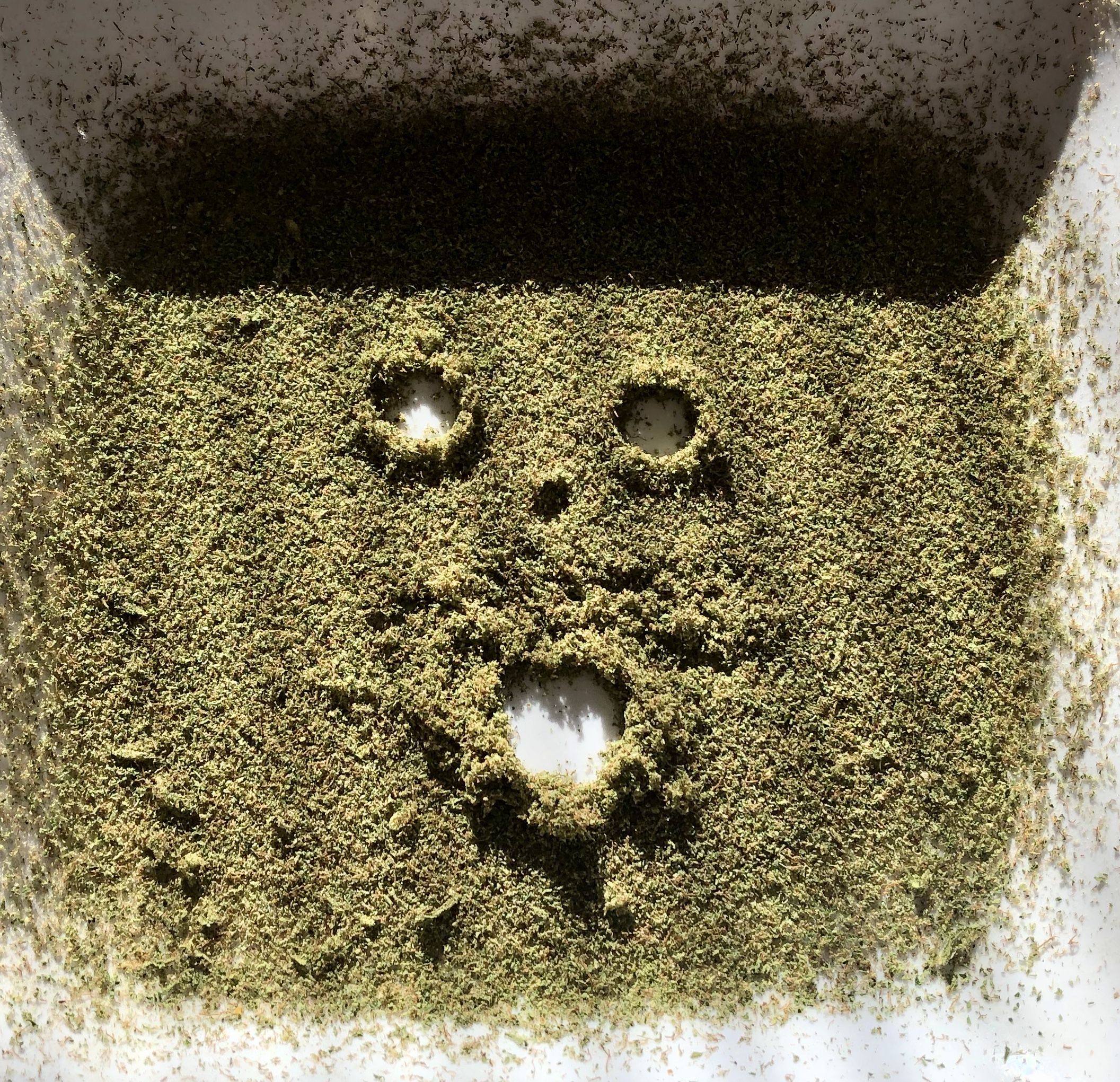
(Yes.)
My point is, greening out (as it’s called on the street) or cannabis hypermesis isn’t like a little bit of hurl that rises in the back of your throat and settles back down into the land of safe containment.
It’s the nastiest end of the cannabis stick and it’s a real syndrome.
For some, it can be an ongoing process lasting for days at a time.
For others, the hell lasts for a few hours.
(Interestedly enough, it’s more common to become an insidious problem that just seems to escalate and keep getting worse, over time for some regular cannabis joint smokers. This leads me to suspect that there’s something else at play (in these cases) and that perhaps a residual pesticide (or something of a chemical nature) is being left on the flowers. This residue is becoming toxic when it’s lit and unknowingly inhaled. If a person always sources their flower from the same place, you can understand how repeated exposure could occur...it’s like slowly being poisoned, every time you smoke a joint.)
At any rate, those affected ARE ABSOLUTELY CONVINCED THAT “THEIR” CERTAIN DEATH IS IMMINENT.
As a result (and as it should) greening out (especially if it’s severe and is ongoing) lands people into their closest hospital, seeking care.
Extreme vomiting for long periods of time will cause severe dehydration and that can and will cause organ failure. It can also cause death.
As this can and does escalate, medical attention is advised if you can’t stop vomiting and it’s been more than 12 hours.
This situation is not to be sloughed off, taken lightly or used to ridicule the person for being weak or somehow inferior for ruining everyone else’s, good time.
In addition, people are and can also be seriously allergic to cannabis.
They can also have genetics which influence how their body metabolizes the herb.
(People with Asian genetics process the herb differently than folks with European genetics.)
Just so I am clear, a person can have genetics and/or an allergy response which makes the sensations of feeling sick (for them) happen quicker, easier and more intensely.
“We aren’t all the same.” ~ @jonyoudyer November, 2019.
(That’s one of my favourite quotes because it’s so true. It hits the e-nail right on its oily head.)
I know everyone of us (who has ever used the herb) has had or knows someone who has had an experience with cannabis that wasn’t all rainbows and kittens.
It happens.
It commonly happens because of lack of knowledge (or ignorance) on the part of the consumer and their ego which can’t quite bring itself to accept that a humble bit of flower (grown in a back garden) could contain enough power to fell a full-grown adult...especially one who regularly drinks hard liquor and is pushing more than 150 lbs.
All that emotion is usually compounded by peer pressure administered with a generous dose of ignorance on the part of the peers involved....because they also have egos which think nobody could possibly be taken down by a little bit of flower.
It’s not a comfortable place to find yourself in.
(Wondering why you can’t seem to enjoy the herb as easily as your friends can.)
This usually results in a person using too much of a strain of the herb (that they don’t like the smell of and wouldn’t have naturally chosen) too quickly for their body.
They overwhelm or flood their body’s receptors with a plethora of medicinal compounds before it’s ready to receive that much; and at a strength level, stronger than their body has developed the capability to process at and keep the body comfortable at the same time.
If I make the correlation to learning to use alcohol, this is like expecting yourself to handle drinking a mickey (or about 11 ozs) of whiskey in a single shot... and then be ok, when you’ve never drank before. Yeah, that’s probably not going to end well, 100% of the time.
As most people aren’t keen to knowingly choose the outcome that culminates with vomiting, you can quickly see WHY this is such a great question and one that’s worthy of some frank discussion.
As a cannabis coach, this has got to be the sentiment that I hear the most frequently from (both genders) who are interested in attempting to integrate the herb into their lifestyle:
“I just don’t want to feel like I’m not in control of what my body does or doesn’t do.”
To this statement I generally reply:
”Consider strategically planning every detail of your experience, in advance. Then, own those planning decisions as you execute them; with the knowledge and confidence you’ve gained through your planning process.”
Yeah, I am suggesting that you plan to get yourself high; with a strain that you’ve researched and chosen for yourself; that’s a gentle beginner strength; in the comfort of your own home. At a time when you don’t have to drive or be fully lucid; and you can enjoy your favourite music, eat your favourite foods and learn. I am suggesting that you can plan to succeed. It is an option.
This way you can learn and conquer any fear, uncertainty or doubt that you may have (on your own terms).
It is better to do this without anyone else’s well meaning intentions, or ignorance interfering with your decisions. This way, you won’t feel pressured into taking more of the herb before your body and brain are ready (and you won’t be caught in a spontaneous social setting feeling scared, like your heart is going to explode and wondering if you’re going to projectile vomit all over your friends.)
Once armed with current knowledge about the herb and what the cooperative components contained within it can do, you can make informed decisions about how you choose to integrate cannabis plant medicine into your lifestyle.
In a measured way...not with all caution thrown to the wind... like you’re taking your chances with a heavy spin of a roulette wheel.
You can truly customize and plan your cannabis use to specifically address the needs and tolerances that your body has.
Cannabis changes lives for the better when it is understood and respected. It creates fear when it’s not.
I can honestly say, that I don’t know a single person who uses the herb solely for recreational purposes. When you drill right down to it and ask, people will tell you everything it helps their bodies with.
A great cannabis experience starts with sound education and a beautifully crafted action plan that’s tailored to the person’s needs and followed through on.
Let cannabis education be ever green and ever expanding... not the contents of your stomach.
Cannabis Education 101:
- There are 1,000s of different strains or different varieties of the plant, just like there are many different types of tomatoes. It is not uncommon to see 50 different strains listed for sale at a busy dispensary or through a single online store.
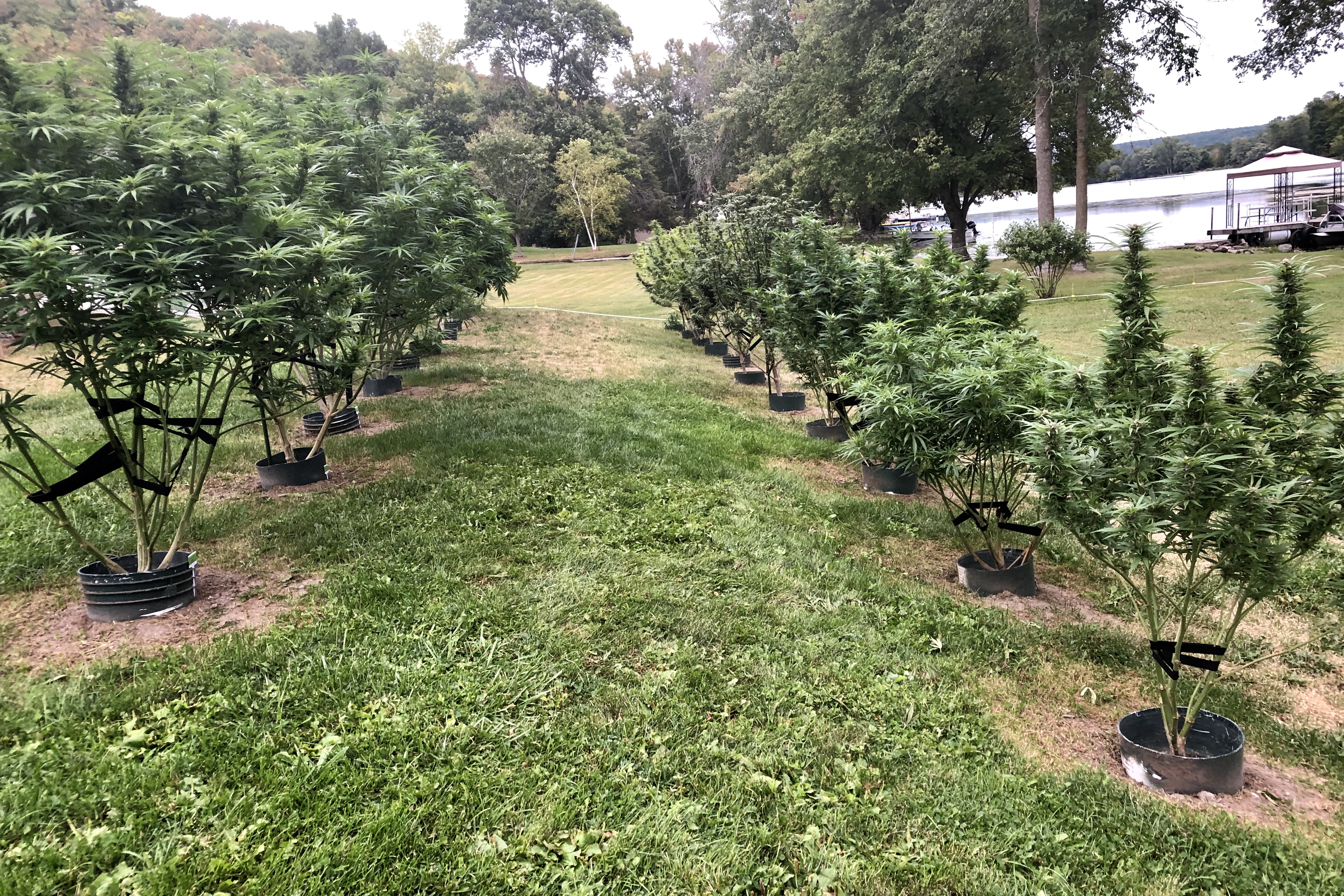
-
Every strain is unique to the conditions of its grow; even if it’s the exact same strain...it can turn out differently; every time it’s grown. Understanding this fact, early on will allow you to avoid being disappointed. It may also motivate you to buy more of a particular strain that really worked for you and tuck it away for a special occasion.
-
Popular strains are listed in databases which are free to access online and let you research strains by their specific attributes before you attempt a purchase.
-
Spend some time understanding what effects you want to experience. Some folks enjoy feeling energized while others enjoy a more sedative experience. Some strains are known for really making music sound fantastic and others enhance the taste of food. Some strains bring out creativity.
-
The reverse is also true. If you know that you're a person who suffers from anxiety, look for a strain that is known not to cause it. You can do that. They exist.
Organized dispensaries will keep an updated list and information about the strains that they currently have for sale. I usually start with the dispensary’s website and then cross-reference strain information against a general database like: https://www.leafly.com/ .
Doing so, let’s you narrow down your purchasing decisions, in advance.
I am not kidding. You get up to the main dispensary counter and there’s 50 choices and 50 big toes all tapping behind you in a lineup. It’s hugely beneficial if you’ve done some homework already and only have to decide between 4 strains, once it’s your turn to buy.
- Getting use to and understanding how to use different strains will help you to have lots of options or choice.
Getting fixated on using only one strain of cannabis at one strength level (especially if you have fear) will guarantee an outcome of frustration.
This can be tricky for OCD and PTSD folks who can become almost superstitious about a strain, once they discover the freedom that non-looping thoughts bring to their life.
For this reason, I recommend making 2 different strain purchases, every time you shop for the herb.
Plan to buy one for day-time use and one for night-time use.
This way, you’re expanding your palate, building some strength tolerance and can feel how different strains react in your body.
Trying a selection of strains (over time) shows you what does work well and what doesn’t work so well.
I would also suggest keeping a strains (used) log (and refer to it) until you feel confident that you are making comfortable choices, consistently for yourself.
It is through general use and exposure to strain variety, at different strength levels, that you will acquire the most useful knowledge. What you learn, can then be practically applied to life’s circumstances as and when required.
- The cannabis plant is mostly prized for the sticky resinous oil, which its maturing flowers (and small leaves that grow close to the flower) manufacture and store. (All the other leaves are generally discarded and shouldn’t be included or charged for. Typically only the flowers and sugar leaves are sold by weight in their dried form.)
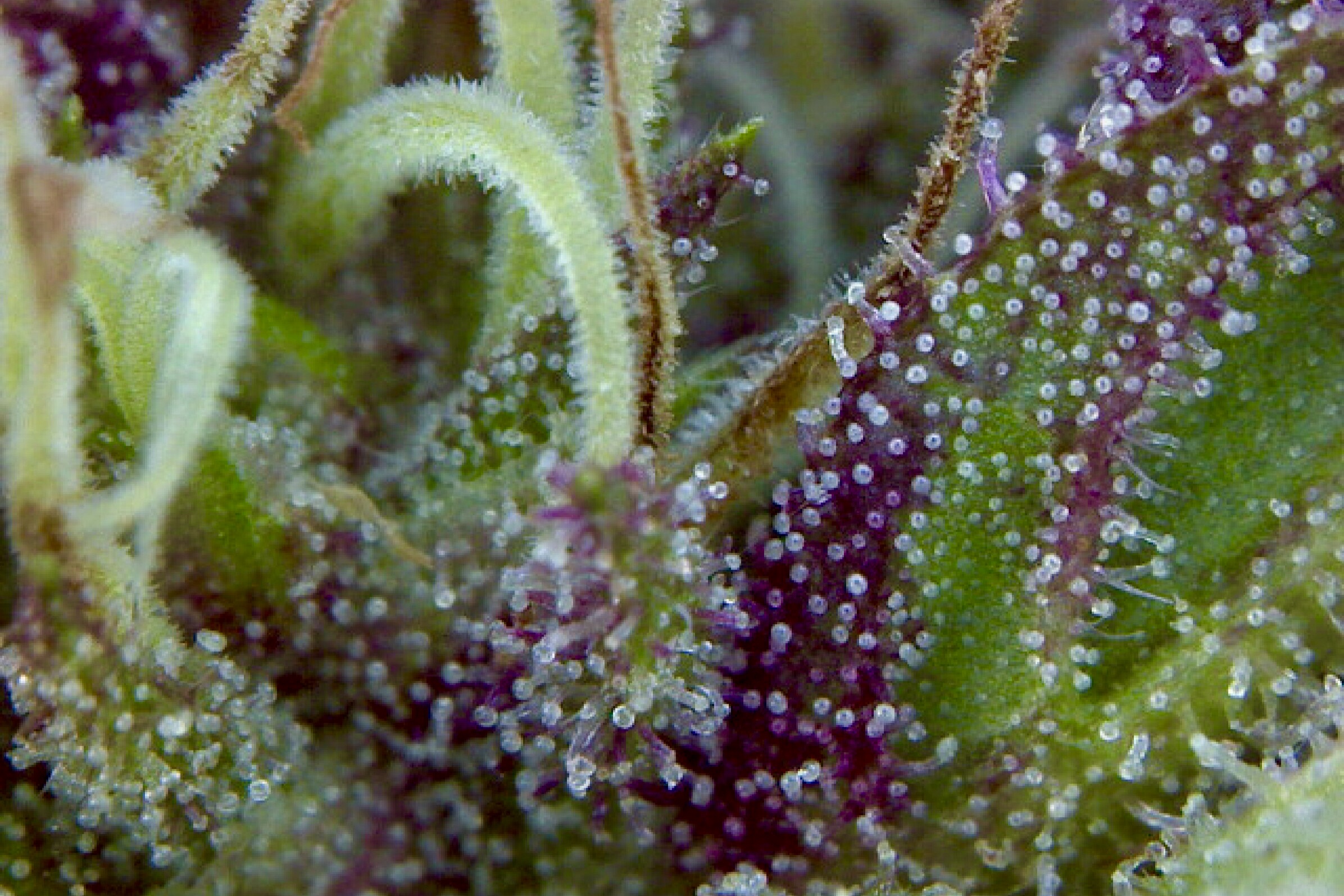
In the photo (above) you can see what the white tube like structures (or trichomes) of a flower look like as they are developing. This photo is under 60 x magnification.
- At the correct level of maturity, the flowers are cut, dried and cured. At this point of production, the flowers are called buds and the small leaves are called sugar leaves or shake.

In the photo (above) you can see what a more mature flower looks like under magnification. You’ll notice some amber colouration is now present. This flower is ready to be harvested.
- Dried bud and shake is generally measured out and sold by weight. Obviously, it’s better when this weighing is done in front of you at the time of purchase, but it isn’t always. Some dispensaries pre-weigh and pre-package their produce to speed up the transaction process. They’ll display bulk material for your viewing and smelling pleasure, then you make your selection(s) and pay as they hand you a discreet bag of the goods you’ve purchased. It is common for dispensaries only to deal in cash, unless you purchase from one that’s operating online.
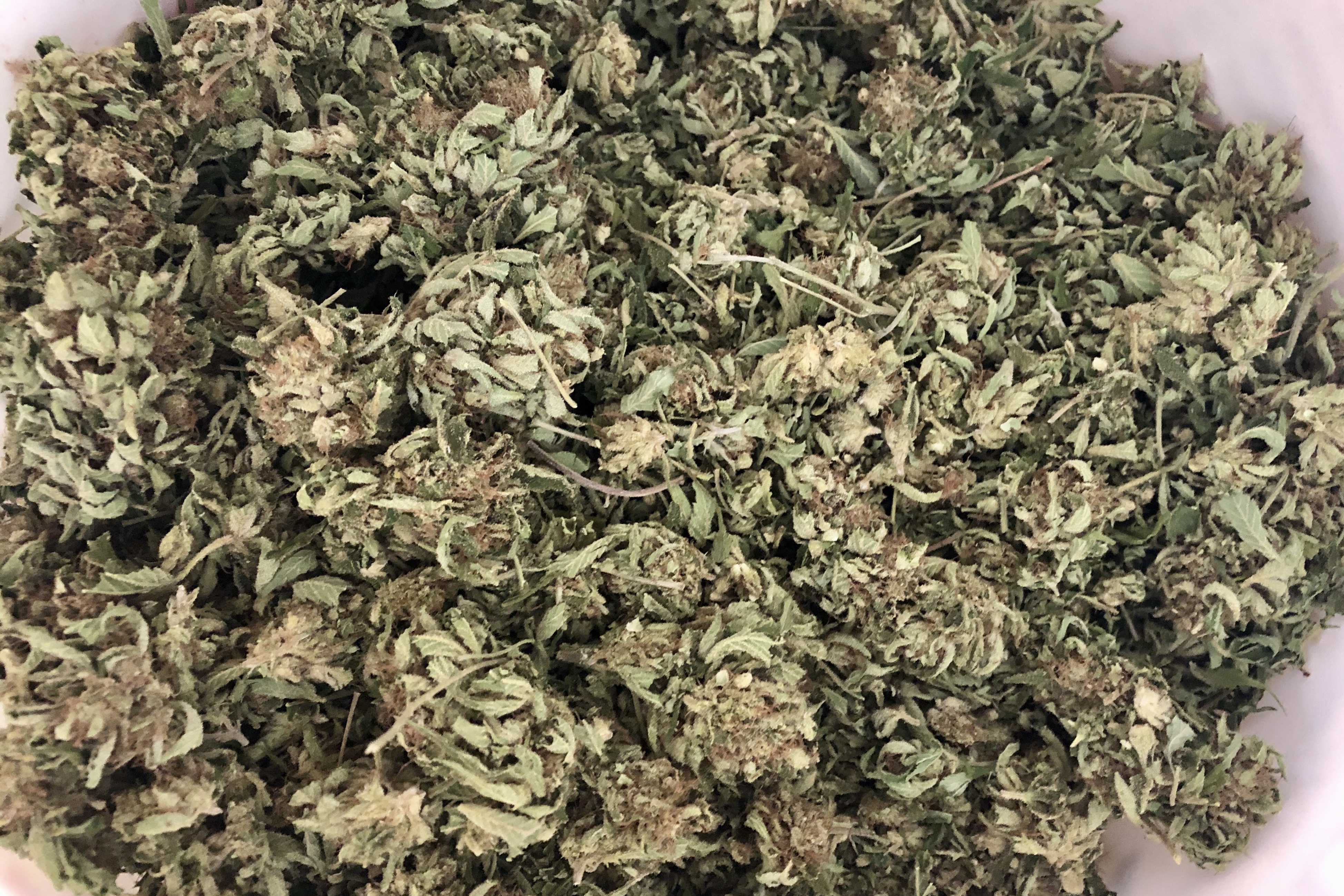
In the photo (above) you can see what the flowers look like once they’ve been harvested, trimmed, dried and cured. (Not under magnification.)
-
The cannabis plant has 3 potential genders. Female, Male and Hermaphrodite. (The hermaphrodite thing can happen if a female plant gets too stressed-out while it’s trying to grow). Female cannabis plants produce more medicine than males and if they don’t become pollinated, will produce a stronger finished product. Cannabis flowers and sugar leaves from female plants are exclusively used for those 2 reasons. Unless a person is breeding strains or is ignorant to the gender factor, male plants are culled (and should be) before they have a chance to pollinate a female. If the flower you buy is loaded with seeds, it is a female that was pollinated and it won’t contain as much medicine as it could have, nor the strength. That is a factor in what’s its weight price should be offered at. (Rare in most dispensary operations these days, but still common to see in a street purchase or when traveling to a different country and buying on a beach.)
-
A cannabis plant can take 4 months to grow outside (in soil) and as little as 10 weeks inside, hydroponically (in water.)
-
There is a huge debate as to whether hydroponically grown is better than soil grown. Some dispensaries charge a premium for “organic outdoor, and hydroponic.”
-
Topical ointment applications and bath bombs that have been infused with cannabis along with vaping the dried herb are the gentlest ingestion methods.
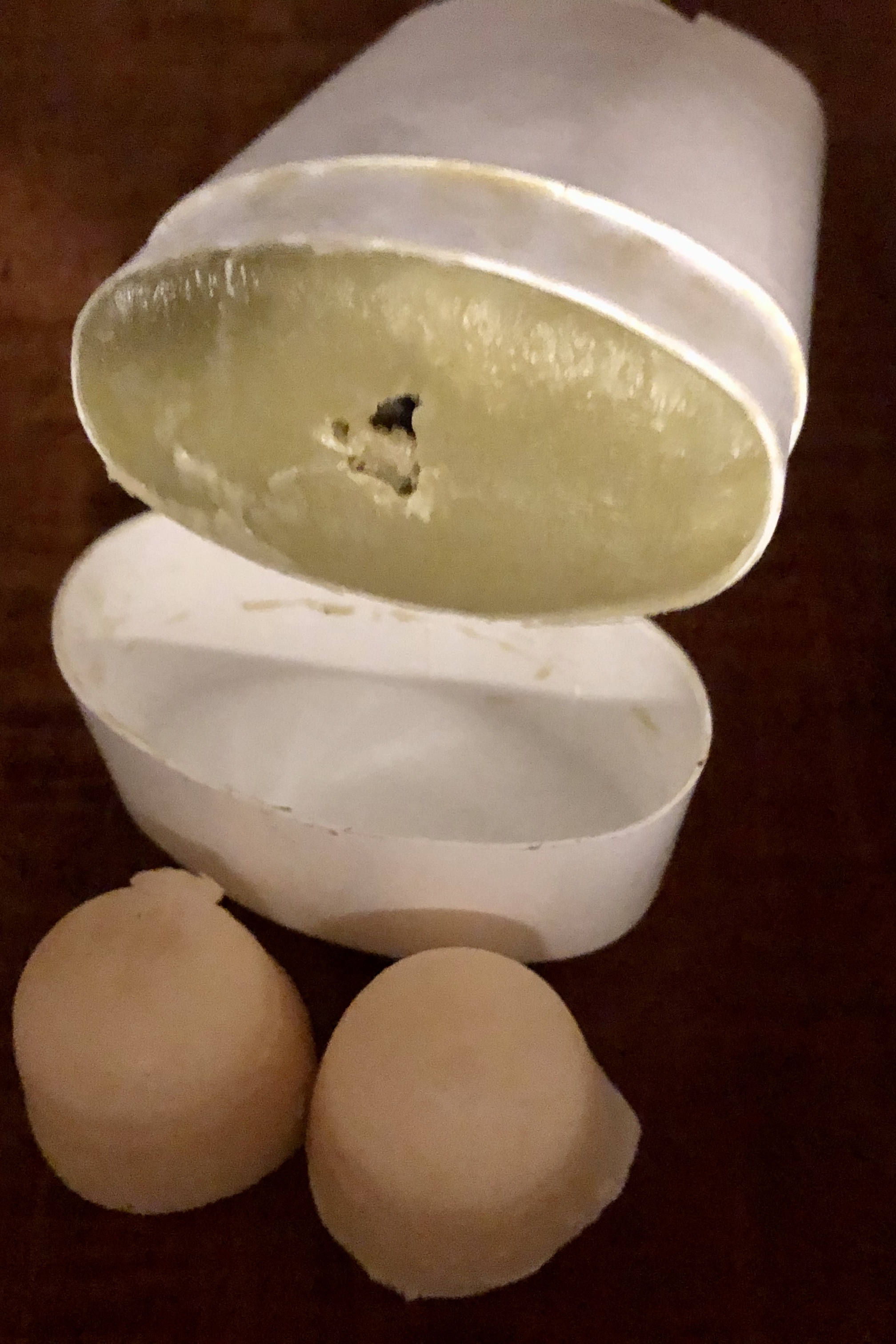
In the photo (above) you can see what a cannabis infused salve and a couple of bath bombs looks like.
Yes, using cannabis can be as easy as taking a bath or as simple as applying some lotion to an inflamed body part. It doesn’t mean that you have to take up smoking.
- Eating a fully extracted concentrated oil (also known as a FECO) that has been decarbed is the strongest ingestion method (currently available). A FECO is often used to medicate cannabis infused edibles. The most popular to see on offer for sale are cookies, brownies and gummies.
If you purchase an edible, the dose per portion should be listed on the package, along with the amount of THC or CBD per portion.
The standard dose per portion recognized as being a safe starting dose for an edible is 10 mg of THC or CBD.
Often one edible contains 10 doses.
Read the package carefully and understand the portion size that will equate to a 10 mg dose.
If you can’t determine this, don’t buy the product.
THC (when decarbed and eaten) is 10 TIMES stronger than smoking cannabis. It will also last for 6+ hours depending upon the person’s tolerance level so it’s really important to proceed with caution and start with small portions.
-
Edibles can take a couple of hours to be metabolized by the person’s liver. Put at least 3 hours between your first portion and the ingestion of your next portion to avoid being hit with the strength of 2 doses (on top of one another) in the course of an afternoon or evening.
-
Being a regular joint or pipe smoker gives a person tolerance for smoke inhalation. It does not give a person automatic tolerance for handling edibles. That tolerance is only built through regularly eating cannabis infusions because we are dealing with a different molecule entirely (11-THC as opposed to 9-THC).
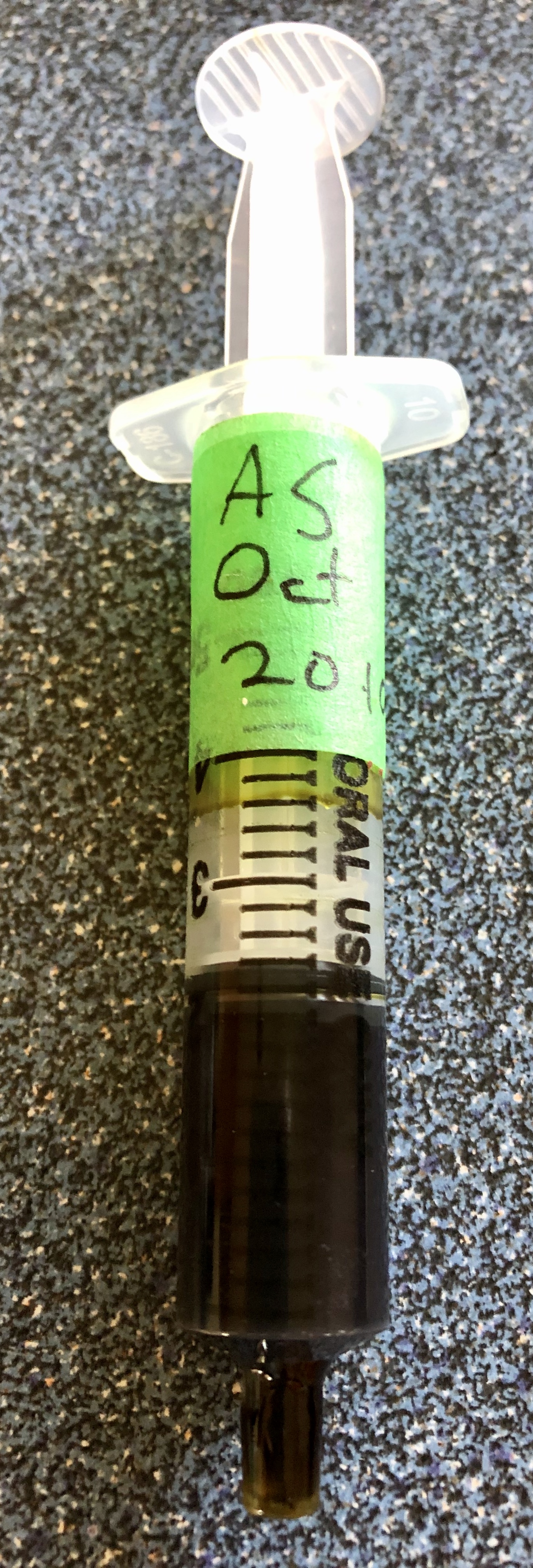
In the photo (above) you can see what a FECO looks like once it’s been extracted from the flower.
-
Smoking, dabbing and eating infused butter, olive or coconut oil (by the drop or ml) fall in the mid-range in terms of strength (usually).
-
Cannabis flowers contain 3 main medicinal components. This includes terpenes, flavonoids and cannabinoids. All 3 components work synergistically together and when they are permitted to do so (as nature intended) this form of medicine is referred to as being full spectrum. There are products available for sale (like distillates) which are usually a concentration of a single cannabinoid. In my humble opinion, it is advantageous to learn to use a full spectrum medicine because it is readily available and can do more for your body and your brain. It’s a complete medicine and a better investment for the money.
-
Terpenes and flavonoids are what give each strain a distinct aroma and taste. They also are partly responsible for creating the most beneficial conditions so that a person can feel emotions...like happiness and love.
The duality of this, is that they are also partly responsible for creating the perfect conditions which allow a person to feel paranoid, anxious depressed and ultimately like they are going to die.
For This Reason, Never Use A Strain That Doesn’t Make You Want To Roll Around In A Huge Pile Of It As Soon As You Smell it.
Just like a cat does once it’s introduced to catnip.
If you can’t stomach the smell, the strain isn’t for you.
If the strain smells like a chemical soup, DO NOT buy it.
Move onto another strain until you find the strain that you can’t stop smelling because you loved it at the first whiff.
-
THC and CBD are 2 of the most commonly tested for cannabinoids. They both require heat and time to convert from their raw molecular form into their activated form (just like the 125+ other cannabinoids do). Many of the cannabinoids require different temperatures to convert effectively from their raw form into their activated form. CBD generally requires 295 degrees F; while THC require 240 degrees F. Those details become important when setting a vapourizer’s temperature setting or when cooking with the herb. People who choose to smoke are decarbing as soon as they lite the flower on fire in their pipe or joint.
-
THC produces a psycho-active experience. Even at low (1%) amounts.
-
CBD doesn’t produce a psycho-active experience Unless the strain actually contains trace amounts of THC and a person ingests a lot of it at once.
Always test a (new to you strain) when you don’t have to be responsible to drive or care for anyone else but yourself. I suggest doing this with all new (to you) strains until you know how your body is going to feel and you’re comfortable with its effects.
- All cannabinoids correct deficie